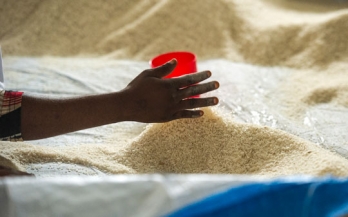This study report presents a costing model that was developed to calculate the total national cost as well as to estimate the probable increment in the retail price of fortifying wheat flour and edible oil produced by large flour mills and edible oil refineries with essential micronutrients, and to determine export price of these products.
In an effort to explore the potential of new food vehicles for large-scale food fortification in West Africa, GAIN took advantage of two FACT surveys conducted in West Africa that measured quality, coverage and/or consumption of mandatorily fortified foods, for exploring the potential of other industry manufactured foods for fortification.
This report summarizes the findings of the end-line survey to assess the impact of the oil and wheat flour fortification programmes in Côte d’Ivoire conducted in households in three communes in Abidjan and the rural area of Bouaflé in October 2010.
This report presents findings from a series of in vivo and in vitro studies to optimize iron fortification of rice in terms of iron bioavailability and sensory acceptability. It has been suggested, that zinc can negatively influence iron absorption.
This report presents the findings of a Large Country-Lot Quality Assurance Sampling (LC-LQAS) survey that was conducted to evaluate the current coverage and impact of the national flour fortification programme (NFFP) after five years of implementation of the NFFP. The LC-LQAS method was used to design a sample that was representative nationally and within the programme catchment areas.
This report summarises the findings of the 2010 micronutrient survey conducted in Jordan in March and April 2010. The survey follows an earlier micronutrient survey conducted in 2002, four to five months after the start of a national flour fortification program.
In 2014, a national survey on iodine coverage and utilisation was conducted in Senegal to better understand factors associated with access to adequately iodised salt, and to provide an evidence base from which to plan, monitor and evaluate a revised strategy for achieving optimal iodine nutrition.
The objective of this paper is to introduce the reader to the set of papers included in this Supplement reviewing methods and experience with Household Consumption and Expenditures Surveys to inform nutrition, and specifically food fortification programs.
The primary objectives of this chapter are to review methodologies used to date to evaluate the impact of food fortification programs in populations, discuss the strengths and limitations of these methodologies and resulting evidence, and provide recommendations on how such methodologies could be improved.
The objective of this study was to conduct nutrition education based on a market-driven approach guided by the government, in order to develop an effective and feasible model for the promotion of iron-fortified soy sauce in China in one pilot site in the city of Jinhua, Zhejiang Province.










